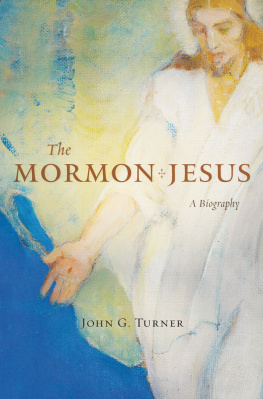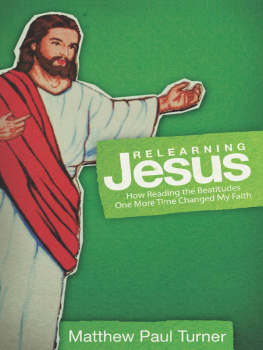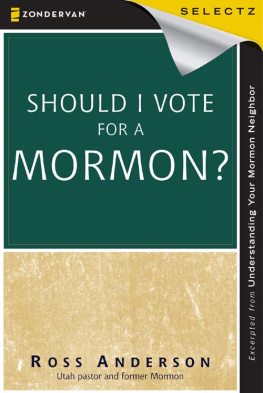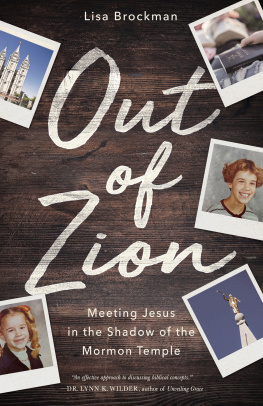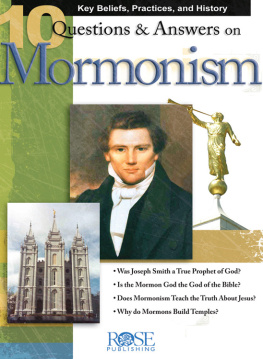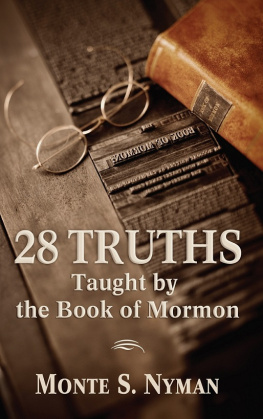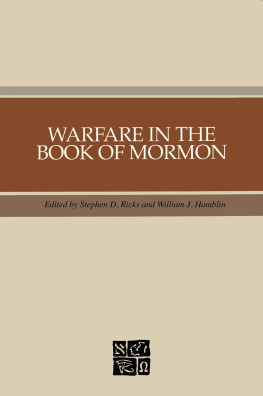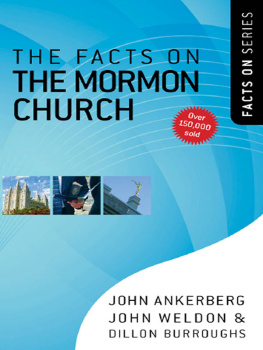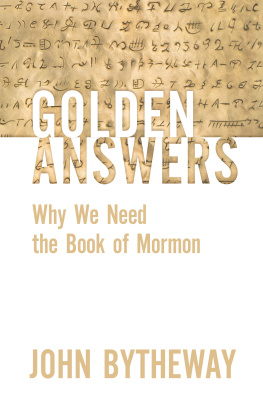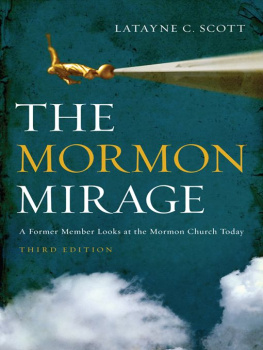John G. Turner - The Mormon Jesus
Here you can read online John G. Turner - The Mormon Jesus full text of the book (entire story) in english for free. Download pdf and epub, get meaning, cover and reviews about this ebook. City: Harvard, year: 2016, publisher: Harvard University Press, genre: Religion. Description of the work, (preface) as well as reviews are available. Best literature library LitArk.com created for fans of good reading and offers a wide selection of genres:
Romance novel
Science fiction
Adventure
Detective
Science
History
Home and family
Prose
Art
Politics
Computer
Non-fiction
Religion
Business
Children
Humor
Choose a favorite category and find really read worthwhile books. Enjoy immersion in the world of imagination, feel the emotions of the characters or learn something new for yourself, make an fascinating discovery.
- Book:The Mormon Jesus
- Author:
- Publisher:Harvard University Press
- Genre:
- Year:2016
- City:Harvard
- Rating:4 / 5
- Favourites:Add to favourites
- Your mark:
- 80
- 1
- 2
- 3
- 4
- 5
The Mormon Jesus: summary, description and annotation
We offer to read an annotation, description, summary or preface (depends on what the author of the book "The Mormon Jesus" wrote himself). If you haven't found the necessary information about the book — write in the comments, we will try to find it.
The Mormon Jesus — read online for free the complete book (whole text) full work
Below is the text of the book, divided by pages. System saving the place of the last page read, allows you to conveniently read the book "The Mormon Jesus" online for free, without having to search again every time where you left off. Put a bookmark, and you can go to the page where you finished reading at any time.
Font size:
Interval:
Bookmark:
The
MORMON  JESUS
JESUS
A BIOGRAPHY
John G. Turner
THE BELKNAP PRESS OF HARVARD UNIVERSITY PRESS
Cambridge, Massachusetts, and London, England
2016
Copyright 2016 by the President and Fellows of Harvard College
All rights reserved
Jacket image: Minerva B. Kohlhepp Teichert, Jesus Christ Is the God of That Land (1940s), oil on board, 47.88 x 23.75 in., Springville Museum of Art.
Jacket design: Lisa Roberts
978-0-674-73743-3 (alk. paper)
978-0-674-97030-4 (EPUB)
978-0-674-97029-8 (MOBI)
The Library of Congress has cataloged the printed edition as follows:
Names: Turner, John G., author.
Title: The Mormon Jesus : a biography / John G. Turner.
Description: Cambridge, Massachusetts : The Belknap Press of Harvard University Press, 2016. | Includes bibliographical references and index.
Identifiers: LCCN 2015039201
Subjects: LCSH: Jesus ChristMormon interpretations. | Jesus ChristIn the Book of Mormon. | Mormon ChurchHistory. | Mormon ChurchDoctrinesHistory.
Classification: LCC BX8643.J4 T87 2016 | DDC 232.088/2893dc23
LC record available at http://lccn.loc.gov/2015039201
EVERY YEAR IN MID-JULY, Jesus comes down from the heavens onto a hillside in bucolic western New York State. It is the climactic scene of the Hill Cumorah Pageant, an annual production performed by volunteers belonging to the Church of Jesus Christ of Latter-day Saints (LDS Church). In performances that begin just after nightfall, audiences watch the story of an ancient people, their encounter with Jesus Christ, and the visit of an angel to an American prophet.
In 1937, a group of Mormons first performed what was then called Americas Witness for Christ on a hill a few miles south of the village of Palmyra. In the intervening decades, the production and cast have become as large as the massive, multitiered stage now used. Todays pageant includes a script penned by science fiction author Orson Scott Card, a sound track featuring the Mormon Tabernacle Choir, pyrotechnics and other special effects, and elaborate battle scenes.
The pageant brings to life the churchs founding scripture, the Book of Mormon. After a processional that brings the entire cast of hundreds on the stage, the drama begins with the story of Lehi, an Israelite who receives visions of Jesus Christ and then sails for the New World before Jerusalems destruction at the hands of the Babylonians. Lehi and his son Nephi have visions of Jesus Christs future life and ministry. Lehis descendants divide into two warring groups, named, respectively, for his righteous son Nephi and his rebellious son Laman.
The indisputable star of the show, however, is Jesus Christ. After his ascension from Jerusalem, the Christian savior appears to the Nephites and Lamanites. Fitted with wires invisible to the audience, he materializes in a blaze of light above the stage and slowly descends. He announces that he has died for the sins of the world. Jesus tenderly invites children to come and sit around him. He founds a church. Then, he ascends back up to his Father in heaven.
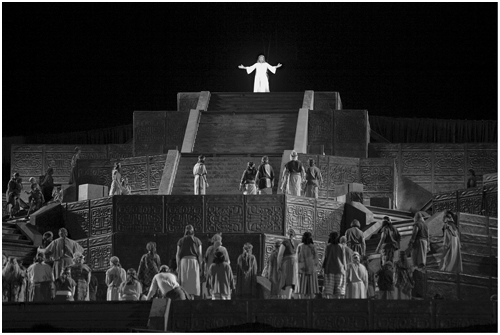
The Hill Cumorah Pageant, 2011. (Photograph by Carolyn Cole. Copyright 2011, Los Angeles Times. Reprinted with permission.)
Jesus Christs ministry ushers in a brief era of peace. Eventually, however, the Nephites and Lamanites resume their warfare, and the wicked gradually exterminate the righteous. The surviving Nephites take refuge in the land of Cumorah, where a climactic battle takes place. Among the last surviving Nephites are Mormon and his son Moroni, who bury the records of their people in a hillside. In the final scene, Moroni returns to earth as an angel in the United States of the 1820s. He leads a young man named Joseph Smith to that same hillside, where Smith retrieves a set of golden plates. Smith translates the writings on the plates, publishes their contents as the Book of Mormon, and founds a church destined to spread across the earth.
Each year, tens of thousands of people come to watch the pageant. For the church, the pageant is both a celebration of its sacred history and a missionary opportunity. Cast members and missionaries circulate among the crowds before and after the show, looking for opportunities to talk to non-Mormons. Those who stop at the visitors center next to the hill see an eight-foot statue of Jesus Christ. Trees have been painted on the walls surrounding the statue; visitors learn that when Joseph Smith was around fifteen years old, God and Jesus Christ appeared to him in a nearby grove of woods.
The pageants claims do not go unchallenged. For years, protestersconservative evangelicals convinced that Mormonism is a dangerous cultalso have come to the Hill Cumorah. Until recently, they proffered anti-Mormon literature from behind a rope as pageant-goers made their way to the hillside. The church recently built a parking lot adjacent to the pageant grounds, which keeps the protesters at a greater distance. Using bullhorns, they shout slogans that question Joseph Smiths character and carry signs criticizing Mormon theology. They insist that Mormons are not Christians.
It is a strange sideshow to the drama on the stage. The hundreds of friendly, polite Latter-day Saint cast members vastly outnumber the protesters and are certainly more winsome exponents of their faith. Still, the scene points to the long-contested place of Mormonism within the landscape of American religion. The pageant and the visitors center, moreover, make plain the current trajectory of the LDS Church and the way it wishes to be understood. The figure of Jesus towersliterally, in this caseover everything else.
According to the Gospel of Mark, Jesus asks his disciples a question while they are traveling: Whom do men say that I am? The disciples report many different opinions. Some people identify Jesus as the reincarnation of John the Baptist, as Elijah (Elias in the King James Version), or as another prophet.
But whom say ye that I am? Jesus presses them. Peter affirms that Jesus is the Christ, a Greek translation of the Hebrew messiah, meaning the anointed one.
In the decades after Jesuss death, New Testament authors employed a host of titles and names for him. He was the savior. He was rabbi, teacher, and Lord. He was the firstborn of every creature, the firstborn son of Mary, and the firstborn from the dead. He was Son of David, Son of Man, and Son of God. He was the word of God and the lamb of God. He was the alpha and omega, the beginning and the end. He was the churchs bridegroom. New Testament writers identify him as a prophet, an apostle, and a high priest.
Christians spent the next several centuries clarifyingand often disagreeing aboutthe meaning of these claims about Jesus, their Christ and Lord. What was his relationship to God? What was the relationship between his humanity and his divinity? Did he have a human nature and a divine nature, or one nature that incorporated both? Consensus was elusive. Some Christians believed that because Jesus was Gods firstborn, there would have been a time prior to the Son of Gods existence. Others bitterly opposed any proposals that would detract from Jesus Christs full divinity and co-eternity with God. As is true of early Christian scriptures, ritual, and theology more broadly, there was a remarkable diversity of belief about the person of Jesus and the meaning of his life, death, and resurrection.
Backed by the Roman emperor Constantine, the early fourth-century Council of Nicaea affirmed that Jesus Christ and God the Father were consubstantial, of the same substance or essence, that the Son of God was just as eternal and divine as his Father. The mid-fifth-century Council of Chalcedon further asserted that the Lord Jesus Christ was consubstantial with the Father as regards his divinity, and the same consubstantial with us as regards his humanity one and the same Christ, Son, Lord, Only-begotten. Though dissent continued in some quarters for centuries, these creedal positions eventually achieved broad assent, becoming the foundation for how Christian theologians and hierarchs understood Jesus Christ and the relationship among Father, Son, and Holy Spirit.
Next pageFont size:
Interval:
Bookmark:
Similar books «The Mormon Jesus»
Look at similar books to The Mormon Jesus. We have selected literature similar in name and meaning in the hope of providing readers with more options to find new, interesting, not yet read works.
Discussion, reviews of the book The Mormon Jesus and just readers' own opinions. Leave your comments, write what you think about the work, its meaning or the main characters. Specify what exactly you liked and what you didn't like, and why you think so.

